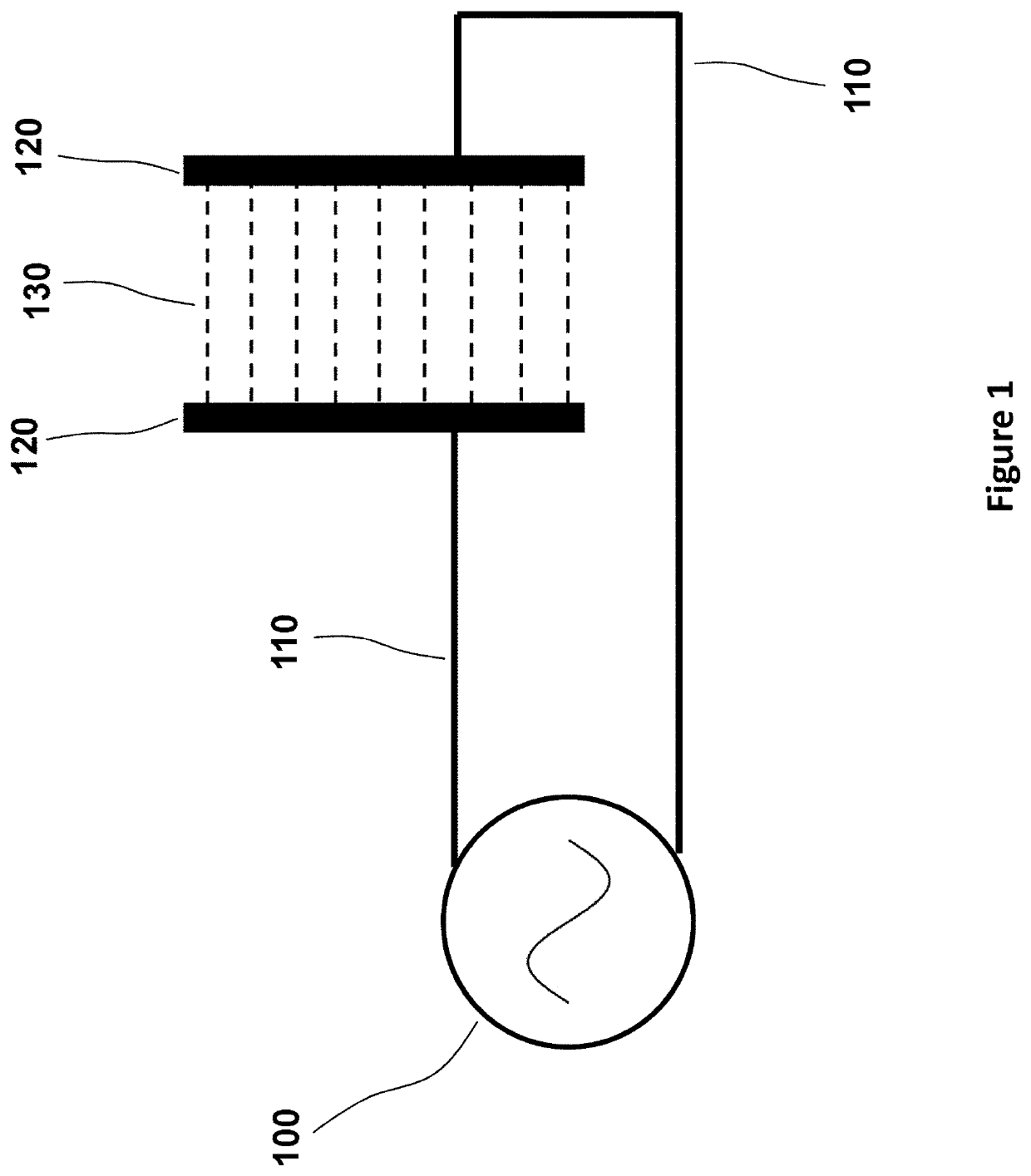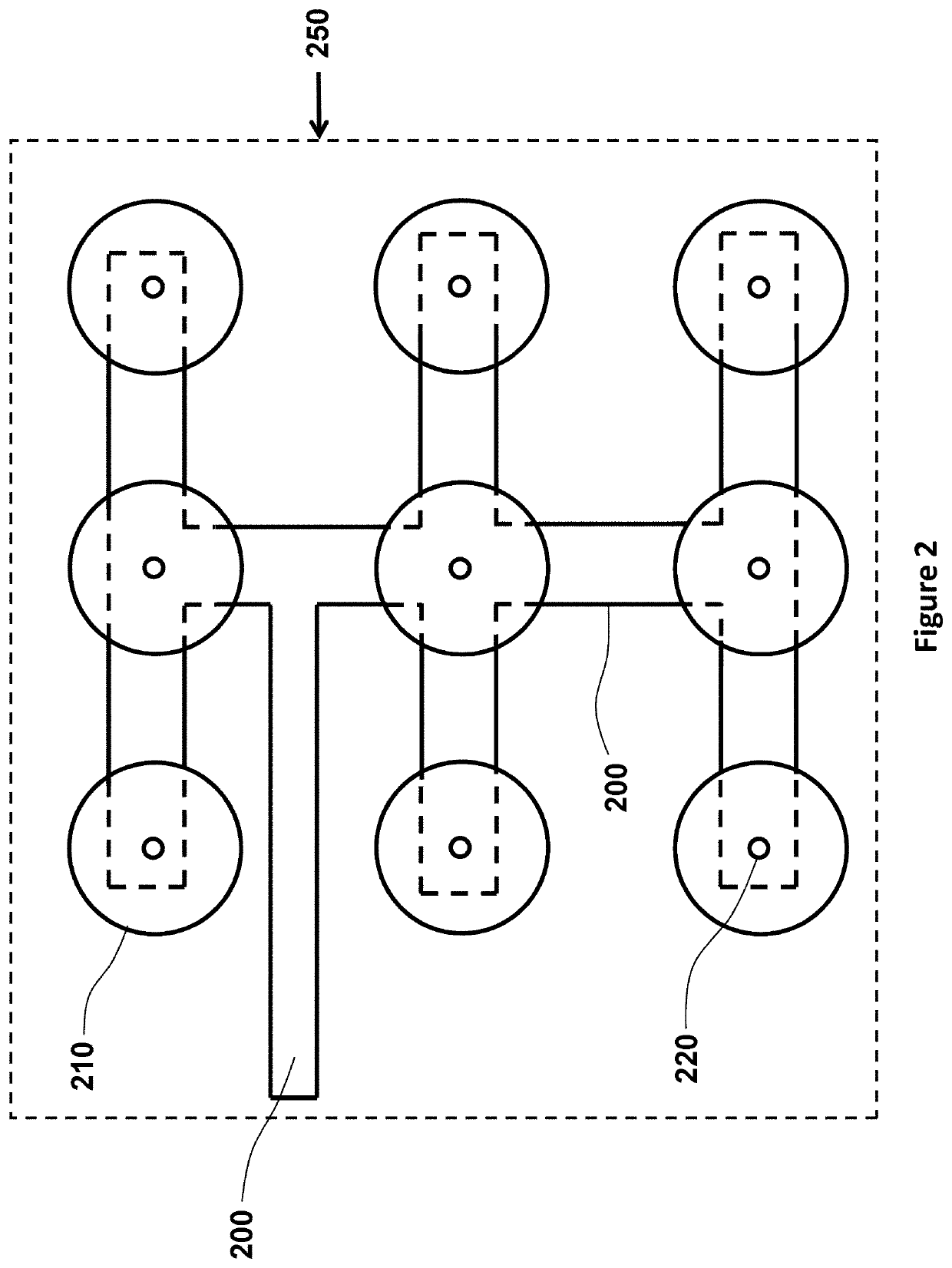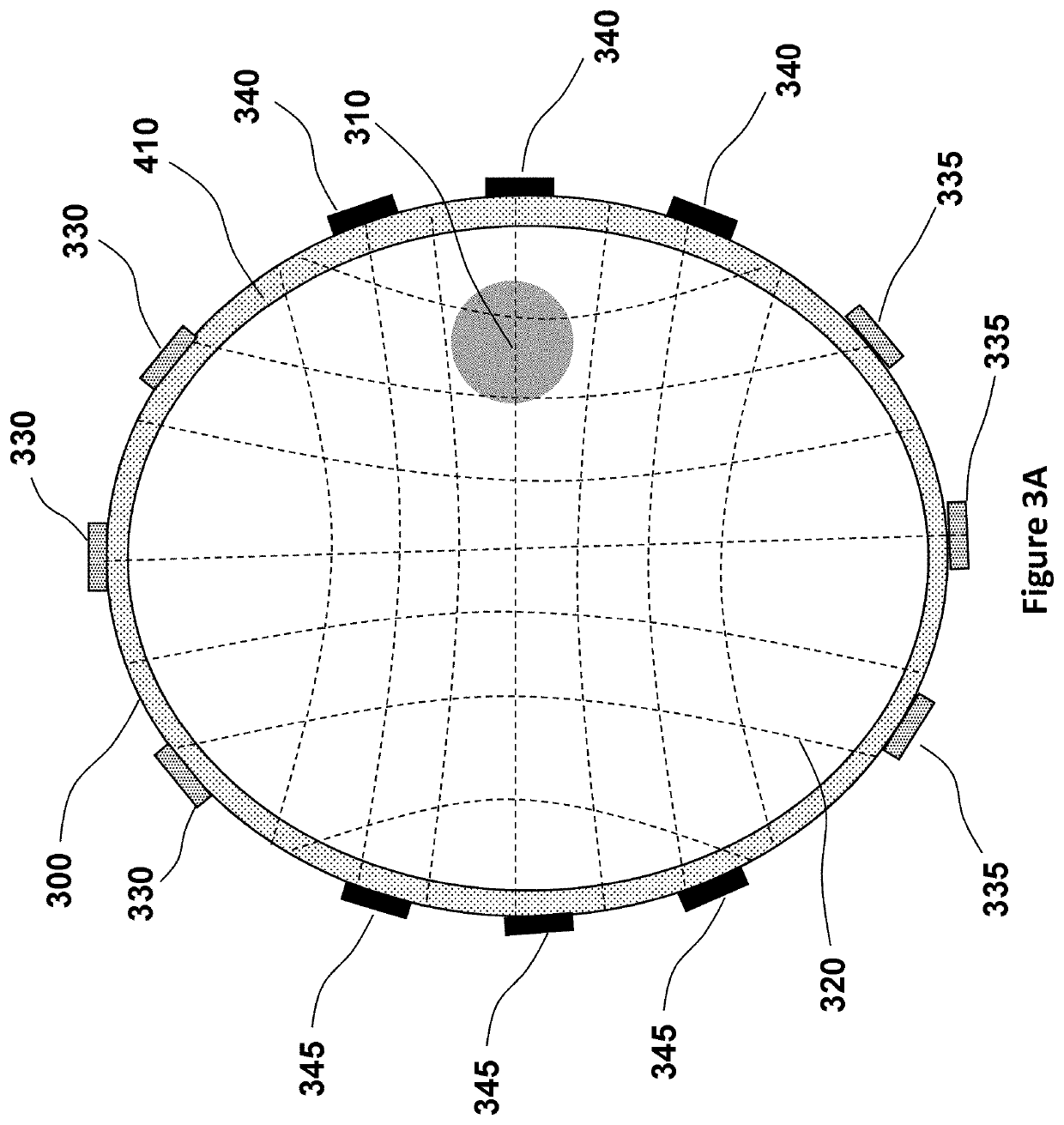[0008]In this invention a novel apparatus for coupling RF power efficiently via evanescent waves to cancer tumors is described along with methods to vary the direction of the polarization of the evanescent waves coupled to the tumor. The apparatus consists of an RF source with one or more coupling elements (wave-launchers, antennas, apertures) that couple RF evanescent waves to part of the body with a tumor. The evanescent waves disrupt the cancer cells during mitosis (as the cells are dividing) causing the cancer cells to die and the tumor size to shrink over time. In one embodiment of this invention, the apparatus consists of an RF source connected to a coupling element through a wire or cable. The coupling element is designed and configured to launch evanescent waves at a desired frequency into the body and couple them efficiently to the cancer tumor. Using this approach, the evanescent waves can be used to target the tumor while significantly reducing RF energy in parts of the brain or body that does not have a tumor.
[0009]Another advantage of this invention is that in the case of brain cancer for example, it does not require a large array of 36 electrodes covering the head of the patient for treating brain cancer and heating the patient's head. The direction of the electric field is also not limited to only two directions in the typical case used in the treatment process. In this invention, utilizing three coupling elements, the evanescent waves can be applied in three perpendicular directions by exciting each coupling element independently. In addition, exciting all three coupling elements simultaneously and changing the amplitude and / or phase of the RF source input independently or simultaneously to the coupling elements, one can change the direction of the applied evanescent waves and the electric fields to target different parts of the tumor. Another advantage of this approach is that the electromagnetic waves are configured to bypass the series capacitance between the insulated electrodes and does not require the insulation to have a high dielectric constant as is required by capacitive coupling. This allows the system to operate more efficiently compared to capacitive coupling and is able to achieve higher electric fields inside the tumor at lower RF power levels. Furthermore, it is not necessary to have the coupling elements to be in intimate contact with the patient's skin allowing longer usage of the coupling elements and less discomfort for the patient's due to the use of adhesives that can cause skin irritation. The coupling element is able to couple RF energy to the patient's brain even if the patient has short hair so the patient does not have to shave his / hair every two to three days.
[0010]As mentioned above, the novel apparatus disclosed in this invention compared to the apparatus using capacitive coupling of electric fields has several advantages for treating cancer tumors. These include higher efficiency with less RF energy dissipated in healthy cells, achieving higher fields and RF power density in the tumor due to the ability to target the RF energy more precisely, operating at lower currents as well as dissipating less RF power, and the bypass of the low value series capacitance (high series impedance) that reduces the voltage drop across the tumor. Since the system operates more efficiently than capacitive coupling one can make portable systems that are more compact, lighter weight, with a longer lasting battery for the patient to use. In addition, the novel approach described reduces or eliminates heating the skin of the patient during the treatment as well as dissipated heat in the patient's body which reduces patient's discomfort particularly during warm weather. Furthermore, it reduces the number of electrodes / coupling elements needed to deliver the required RF power and eliminates the need for the electrode / coupling element to be in intimate contact with the patient's skin eliminating the need to shave the patient routinely as well as eliminates skin irritation caused by adhesives used to attach the electrodes to the patient's skin. Another advantage of this invention is that by using only three coupling elements the polarization of the applied field can be varied dynamically in three dimensions by controlling the amplitude and / or phase of the applied RF to each coupling element allowing the system to target more cells. With capacitive coupling two sets of electrodes have to be placed across from each other in order to apply the electric field in a particular direction. In most cases it is not practical to be able to place three sets of electrodes across part of the body in order to be able to control the polarization direction in three dimensions as a result the capacitive coupling systems are primarily limited to controlling polarization of the applied electric field in two dimensions.
[0011]In addition to brain cancer, this invention with the method described, has applications in treating other types of solid tumor cancers including but not limited to lung cancer, ovarian cancer, breast cancer, and pancreatic cancer. Furthermore, since this treatment has no side effects it can be combined with other cancer treatments, including radiation, surgery, chemotherapy, and immunotherapy, to increase overall treatment efficacy and increasing overall survival rate of the patients.
 Login to View More
Login to View More  Login to View More
Login to View More 


